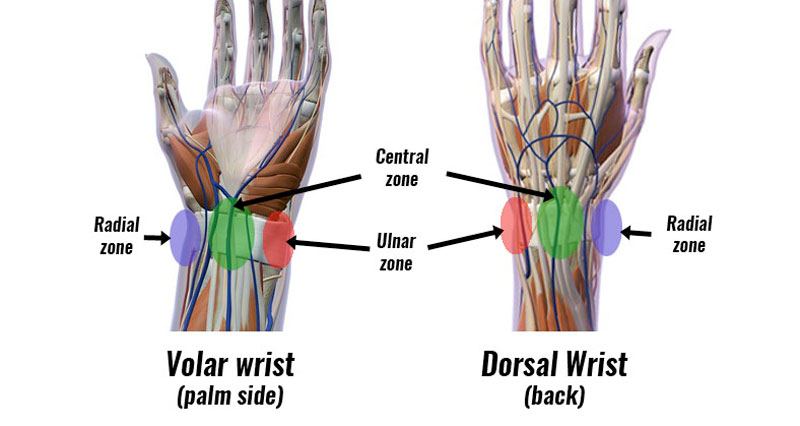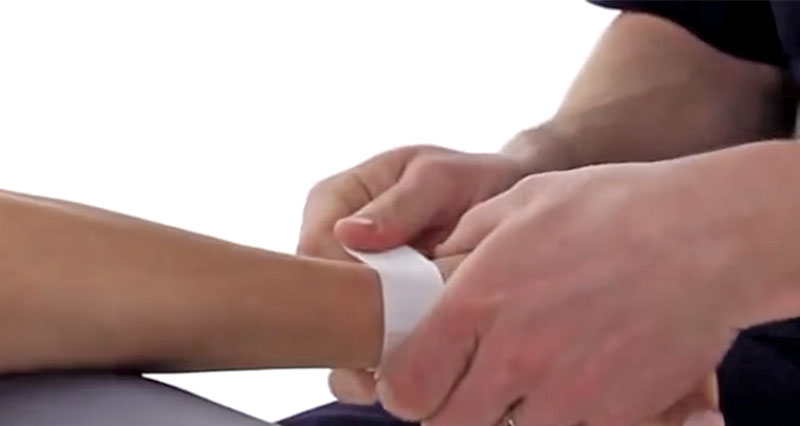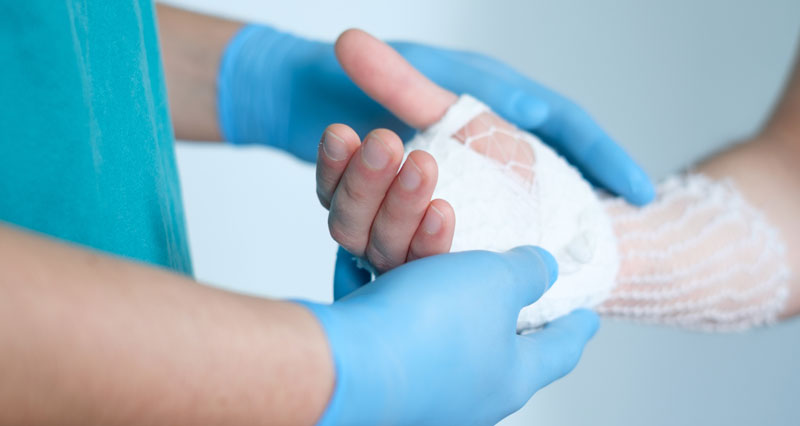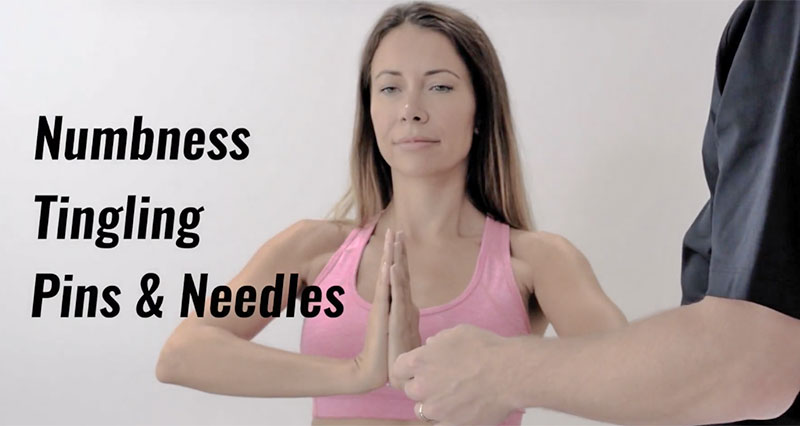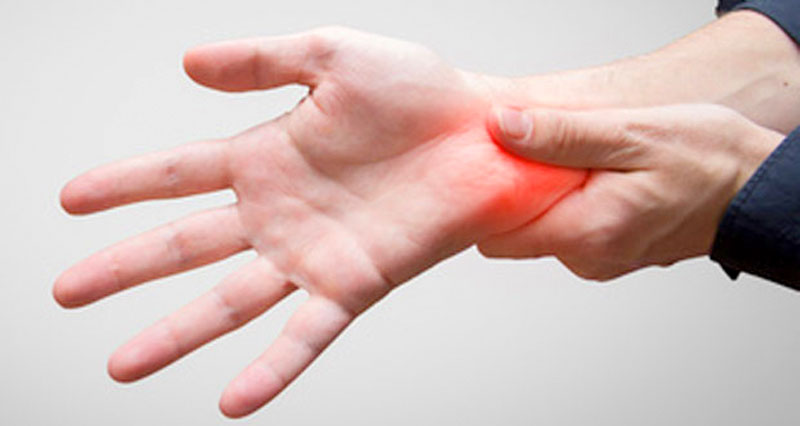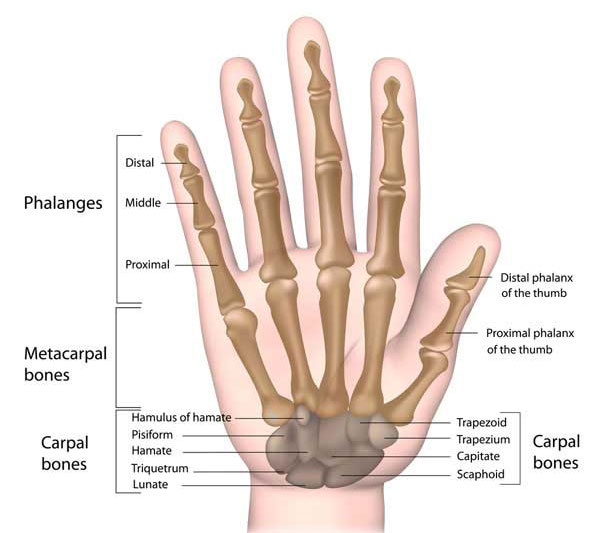
Wrist anatomy is the study of the bones, ligaments and other structures in the wrist. The wrist joint is a complex joint which connects the forearm to the hand, allowing a wide range of movement. However, it is susceptible to injury, especially from repetitive strain.
Bones of the wrist
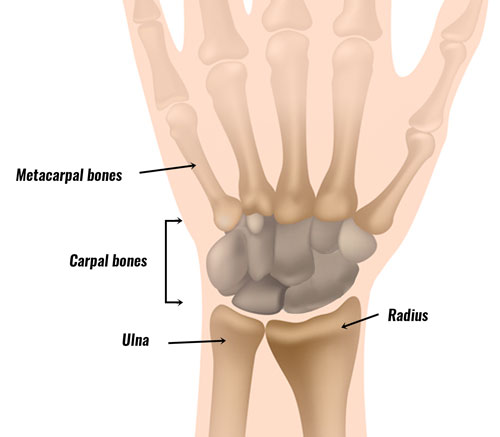
The radius and ulna are the long bones of the forearm. The ulna is the larger of the two bones, although it tapers at the wrist end, to become narrower than the Radius. The Radius is positioned on the thumb side of the wrist, and the ulna on the little finger side.
Top tip – I remember which way round they go because Ulna has an ‘L’ for the little finger side. The radius and ulna form the wrist joint together with the carpal bones.
Carpal bones
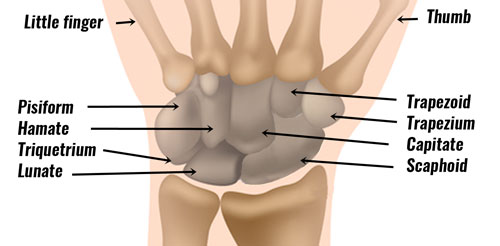
Altogether there are 8 carpal bones in the wrist, which are arranged in two rows, known as proximal and distal. When referring to bones, proximal means ‘near to’ and distal means ‘further away’. The carpal bones consist of the following:
- Lunate -proximal
- Triquetrum – proximal
- Pisiform – proximal
- Capitate – distal
- Trapezium – distal
- Trapezoid – distal
- Hamate – distal
- Scaphoid
The scaphoid bone crosses both rows as it is the largest carpal bone. The scaphoid and the lunate are the two bones that actually articulate with the radius and ulna to form the wrist joint.
Wrist ligaments
Each bone within the wrist is joined to the one next to it by one or more ligaments. As you can imagine, this results in a large number of ligaments! Two of the largest ligaments of the wrist are the medial (ulnar) and lateral (radial) collateral ligaments.
The MCL passes from the distal end of the ulnar and crosses the wrist to attach to the triquetrum and the pisiform. The LCL passes from the end of the radius, across the joint to the scaphoid.
Muscles of the wrist and forearm
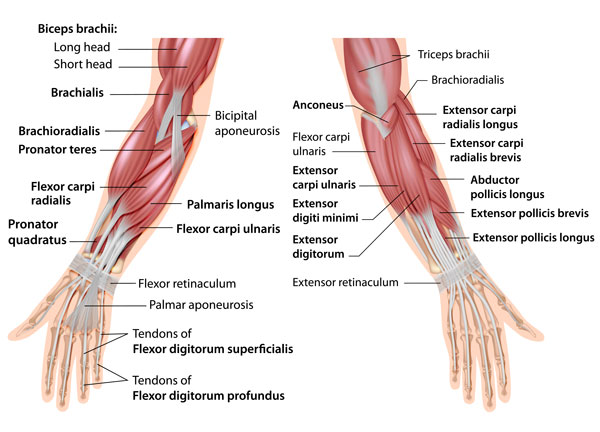
Most of the muscles which act on the wrist joint are situated within the forearm, with only the tendon crossing the joint and inserting it into the hand. The muscles on the back of the forearm (dorsal aspect) act to extend the wrist or pull it back as if pulling a ring pull:
- Extensor carpi radialis brevis
- Extensor carpi radialis longus
- Extensor carpi ulnaris
- Extensor digitorum communis
- Extensor pollicis longus
The muscles on the front of the forearm (palmer aspect) act to flex the wrist, such as when you push a roundabout:
Some of these muscles also help to perform radial and ulnar deviation. Radial deviation is the act of tilting the wrist in a radial direction (or with the thumb leading). Extensor carpi radialis brevis, longus and flexor carpi radialis all perform this movement.
Ulnar deviation is the opposite movement, of tilting the wrist so that the little finger leads. Extensor carpi ulnaris and flexor carpi ulnaris perform this movement.
Read more on wrist muscles.
Nerves of the wrist and hand
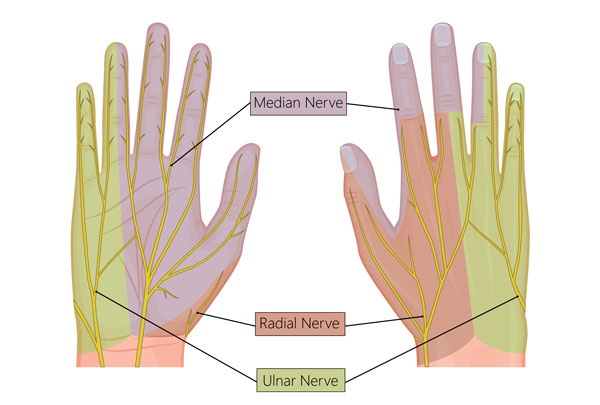
Three nerves pass from the forearm, across the wrist, and into the hand. These are:
Radial nerve
The radial nerve is on the radial, or thumb side of the wrist joint. It provides feeling to the back of the hand from the thumb to the middle finger.
Median nerve
The median nerve is responsible for the development of carpal tunnel syndrome. It passes through the carpal tunnel and splits into four branches which each travel to the thumb and the next three fingers. It provides sensation to all of these fingers, although only the inside half of the ring finger.
Ulnar nerve
The ulnar nerve supplies the small finger and the outer half of the ring finger.
References & resources
- Learn more about anatomy at TeachPE.com
